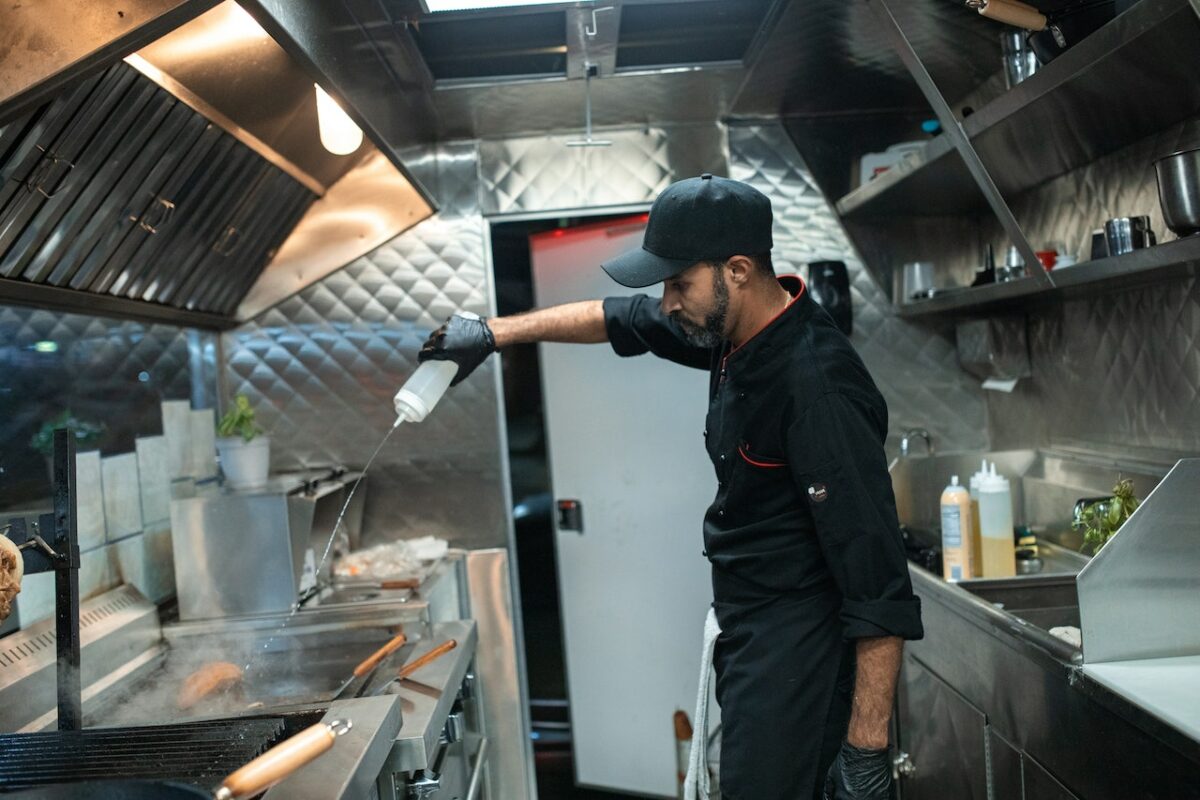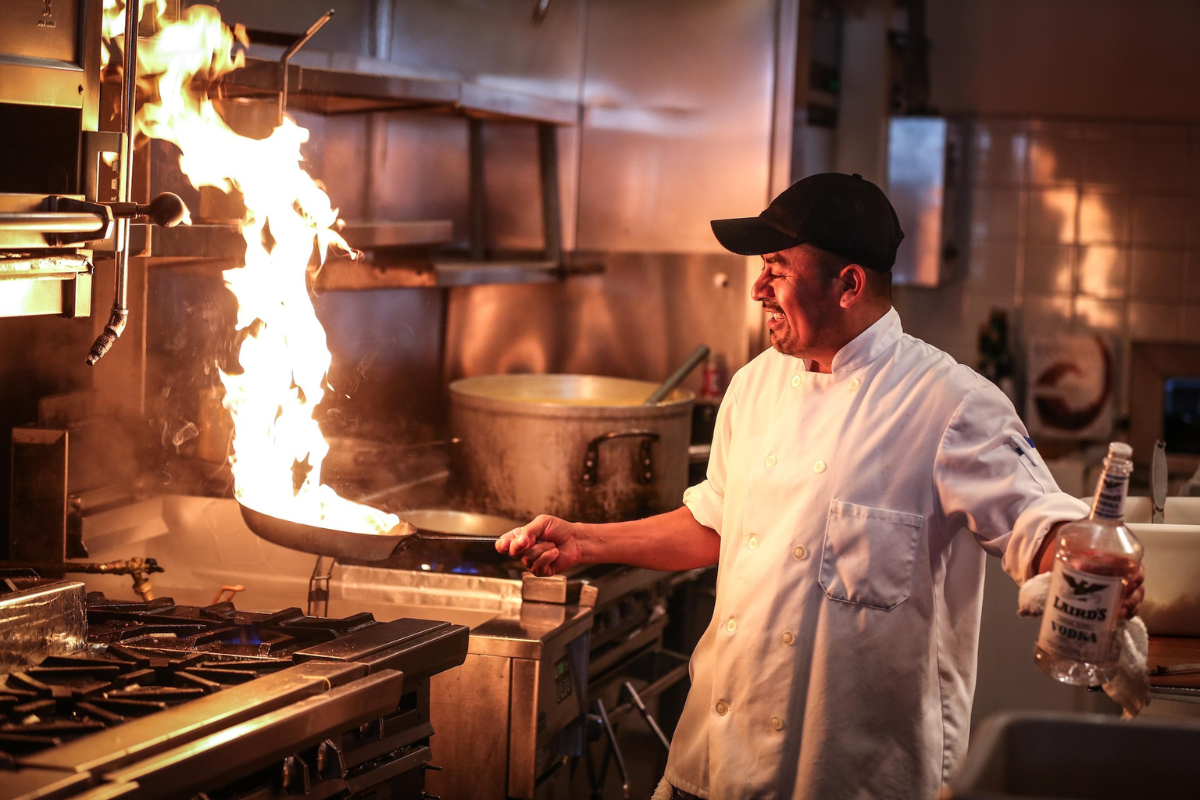The food industry is one of the most competitive sectors worldwide, with small food enterprises and startups facing numerous challenges to stay afloat and grow their businesses.
One of the most significant hurdles is the high cost of setting up and maintaining a fully functional commercial kitchen.
Commissary kitchens have emerged as a game-changing solution to this problem, offering a host of financial benefits.
This blog post will delve into the cost advantages of commissary kitchens, providing food entrepreneurs with the insight needed to make informed decisions about their kitchen needs.
Understanding Commissary Kitchens
What Is A Commissary Kitchen?
A commissary kitchen, sometimes referred to as a shared or community kitchen, is a commercially equipped, health-code-compliant cooking facility that multiple food entrepreneurs can rent for their operations.
Unlike traditional commercial kitchens owned or leased exclusively by one business, commissary kitchens provide shared access to premium facilities and equipment.
They offer a nurturing environment for food producers to create, experiment, and cook without the need for substantial upfront investments or long-term commitments.
Who Uses Commissary Kitchens?
Commissary kitchens are a vital resource for a diverse range of food businesses. These shared spaces are incredibly versatile and can accommodate a variety of different culinary operations.

While they provide a platform for any food entrepreneur, certain types of businesses particularly benefit from their convenience, cost efficiency, and community-based atmosphere. Here are some of the primary users:
- Caterers: Catering businesses often require commercial kitchen space intermittently – during event seasons or on specific event days. Commissary kitchens allow caterers to rent the space only when they need it, significantly cutting down their overhead costs.
- Food Truck Operators: Commissary kitchens are crucial for food truck businesses. In many areas, health department regulations require food trucks to use a commercial kitchen for their food prep. Commissary kitchens offer a solution that’s more affordable and flexible than a traditional commercial kitchen.
- Bakers and Pastry Chefs: Baking requires specific equipment such as commercial ovens, mixers, and proofing cabinets that can be expensive to purchase and maintain. Commissary kitchens often come equipped with these specialty appliances, making them an ideal choice for bakers and pastry chefs.
- Meal Prep Companies: These businesses, which typically prepare large batches of meals ahead of time for delivery or pickup, require ample prep space, storage, and high-grade equipment. Commissary kitchens offer these facilities and often include cold and dry storage that’s essential for these types of businesses.
- Cooking Class Instructors: For those who offer cooking classes but do not own a facility, commissary kitchens provide a professional, fully equipped space to host their sessions.
- Pop-Up Restaurants: Pop-up restaurants or food businesses testing new concepts can utilize commissary kitchens to experiment without committing to a long-term lease for a standalone commercial kitchen.
These businesses and more find value in commissary kitchens. The convenience and cost efficiency of these shared facilities allow entrepreneurs to focus more on refining their culinary creations and less on managing a kitchen, making commissary kitchens an appealing solution for many in the food industry.
The Cost Benefits of Commissary Kitchens
The commissary kitchen model presents several financial advantages that can help small food enterprises overcome some of the most daunting financial barriers to entry and growth in the food industry.
Lower Initial Investment
One of the main challenges facing small food businesses is the high initial cost of setting up a commercial kitchen.
The expense of purchasing or leasing a space, buying high-grade kitchen appliances and equipment, and meeting health and safety standards can quickly escalate into tens of thousands of dollars.
Commissary kitchens have already made these investments, allowing small businesses to bypass these large capital expenditures.
Cost Sharing
Commissary kitchens operate on a shared-cost model. Utilities such as electricity, water, and waste disposal, as well as cleaning services, kitchen maintenance, and sometimes even staff, are divided among the kitchen’s users.
This cost-sharing model can lead to substantial savings, making the kitchen operation more affordable for small enterprises.
Flexible Scheduling
Most commissary kitchens operate on a flexible schedule. Food entrepreneurs can rent the kitchen for specific time slots, aligning with their production schedules and allowing them to pay only for the time they need.
This scheduling flexibility can significantly reduce costs for businesses with variable or part-time kitchen needs.
Increased Opportunities and Revenue Streams
Beyond the direct cost savings, commissary kitchens can contribute to a small food enterprise’s financial health by fostering growth opportunities and providing avenues for diversifying revenue streams.

Networking and Collaboration
The communal nature of commissary kitchens creates an environment conducive to networking and collaboration.
Sharing space with other food entrepreneurs opens up possibilities for partnerships, joint marketing initiatives, or even collaborative products.
These relationships can expand a business’s network, enhance its reputation, and lead to increased sales opportunities.
Market Testing and Expansion
Commissary kitchens are ideal platforms for experimenting with new recipes, techniques, or concepts without making significant investments or changes to an existing kitchen setup.
These facilities offer a low-risk way to test new products or expansion strategies, enabling entrepreneurs to innovate while keeping costs manageable.
Considerations When Choosing A Commissary Kitchen
While the cost benefits of commissary kitchens are clear, businesses should carefully consider a few key factors to ensure they choose a kitchen that best aligns with their specific needs and objectives.
Costs and Terms Of The Agreement
Commissary kitchens vary widely in their pricing structures and rental terms. Some may charge by the hour, while others may offer monthly memberships.
It’s crucial to understand what is included in the price and what may incur additional charges.
Also, businesses should review the terms of the rental agreement, including cancellation policies and penalties, before committing.
Location
The location of the commissary kitchen can significantly impact logistics, delivery times, and transportation costs.
Proximity to customers, suppliers, and even the business owner’s home or office should be factored into the decision-making process.
Equipment and Amenities
Different commissary kitchens offer varying levels of equipment and amenities. Businesses need to ensure the kitchen they choose has the specific appliances, tools, and workspace they need to efficiently produce their food products.
Conclusion
Navigating the complexities of the food industry can be daunting for small businesses and startups.
High setup and operational costs, coupled with the intense competition that characterizes the market, can pose significant barriers to entry and growth.
However, these challenges should not be viewed as insurmountable. With innovative solutions like commissary kitchens, there are ways to circumvent these obstacles and pave a viable path to success in the food business.
Commissary kitchens offer a host of benefits that can provide a lifeline for small food enterprises.
These shared facilities significantly reduce the financial burden of setting up a commercial kitchen, thereby lowering the entry barriers for new food businesses.
By distributing costs among multiple users, they make operations more affordable and financially sustainable for small businesses.
Further, the flexibility inherent in the commissary kitchen model can be a boon for enterprises with fluctuating production needs or those who want to scale up or down based on demand.
This adaptability is a crucial feature in an industry as dynamic and unpredictable as the food business.
Ella Marcotte
Latest posts by Ella Marcotte (see all)
- UA vs GA4: The 4 Big Differences You Need To Know - April 26, 2024
- Understanding The Role Of Control Valves In Industrial Automation - April 8, 2024
- How Automation Can Boost Your Business Outcomes - April 4, 2024




